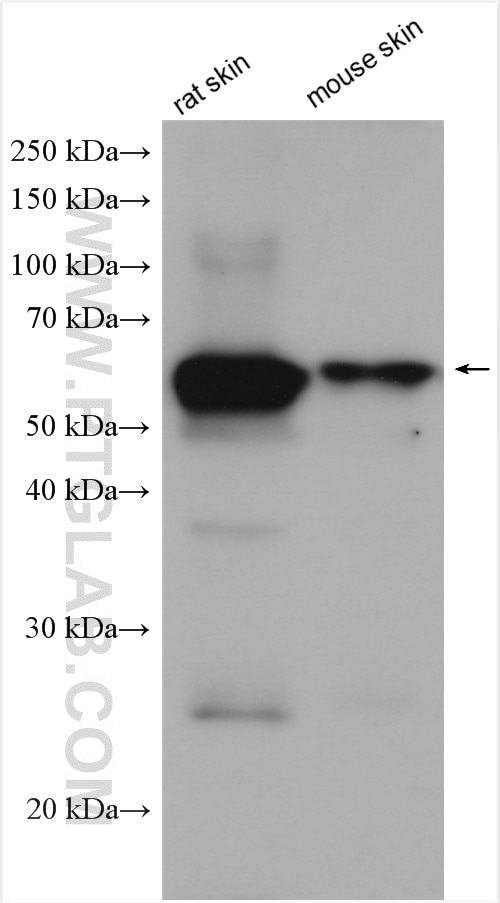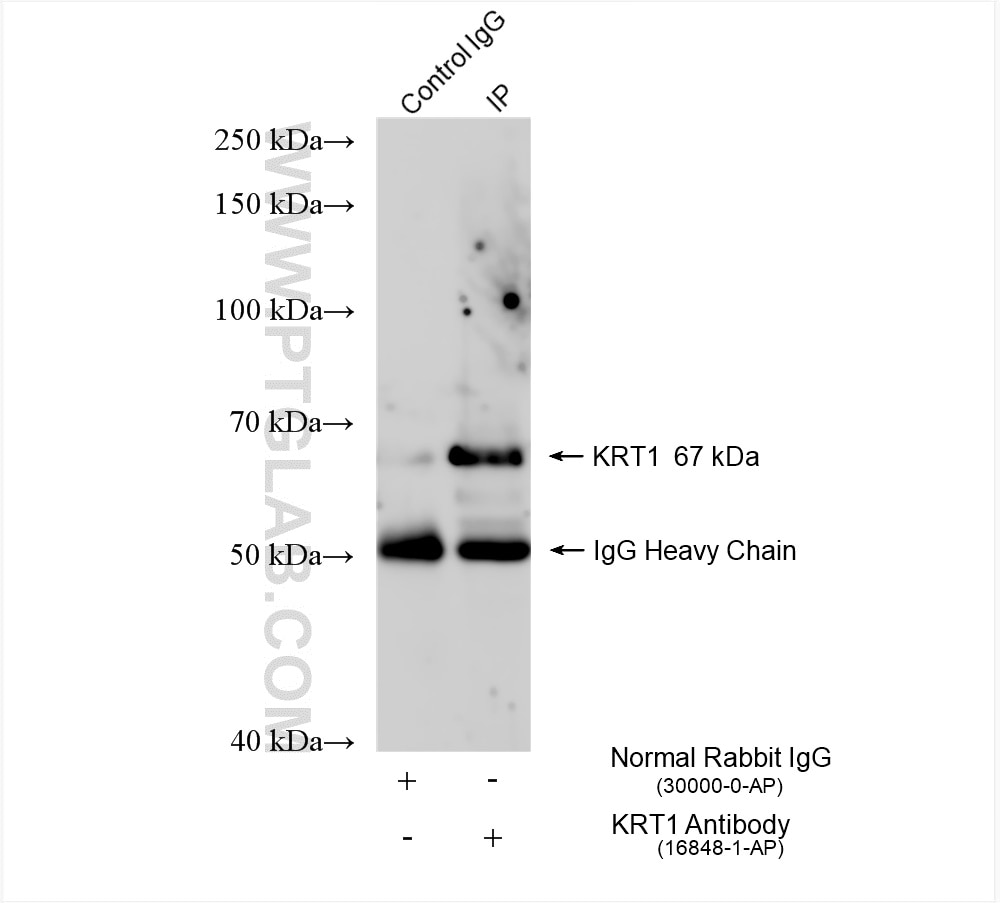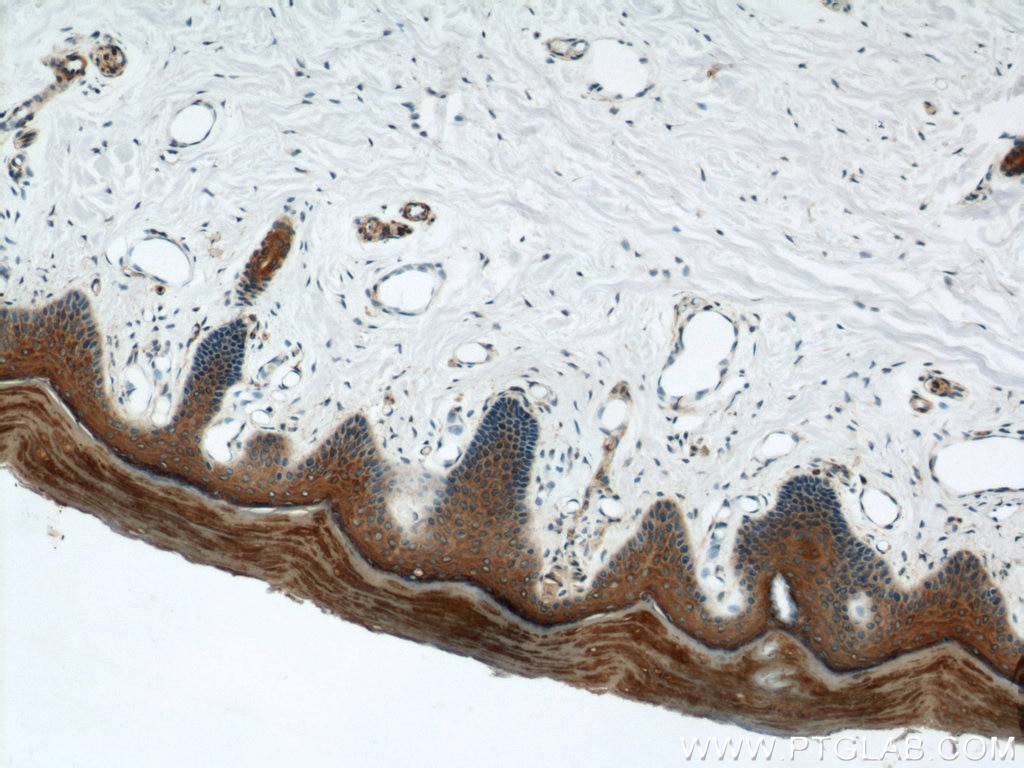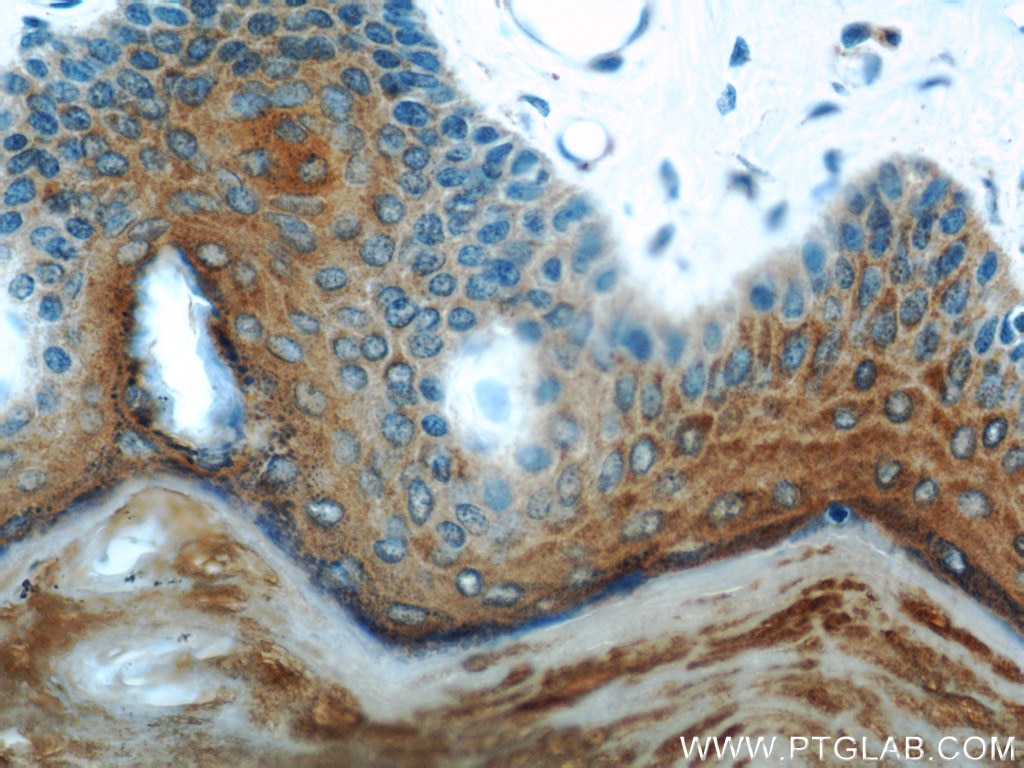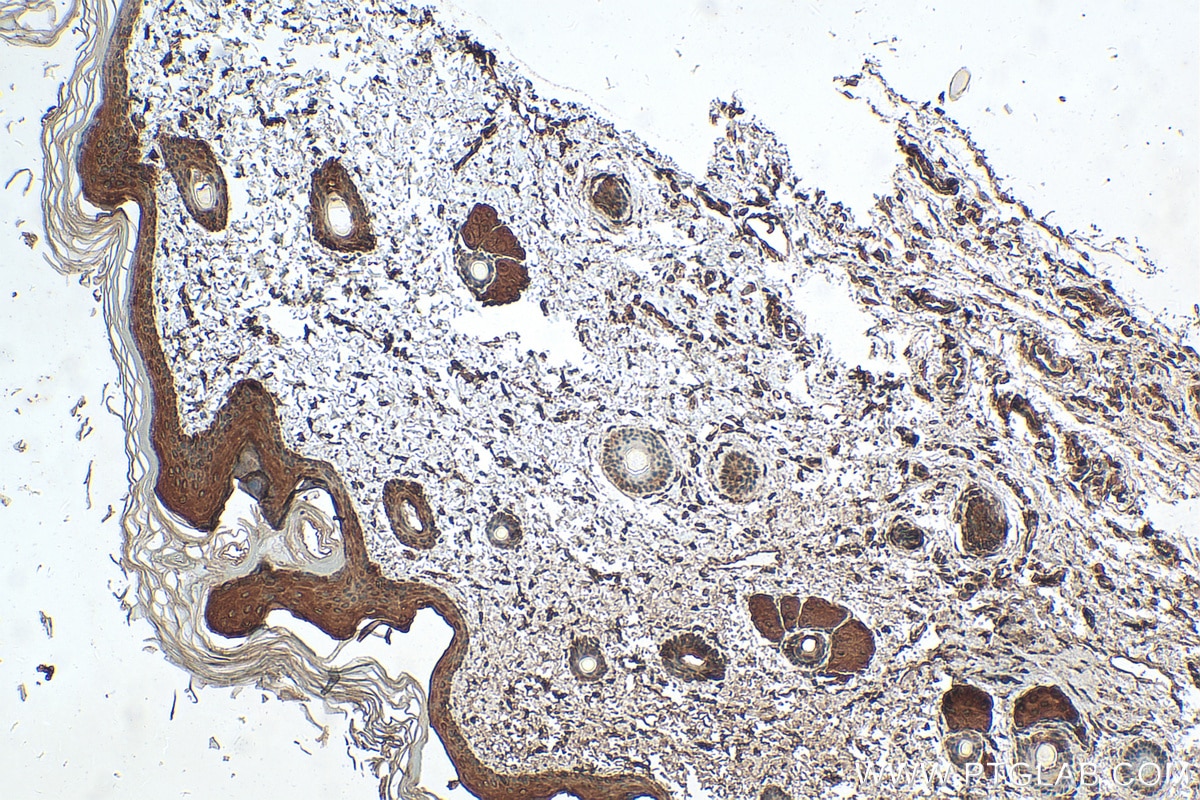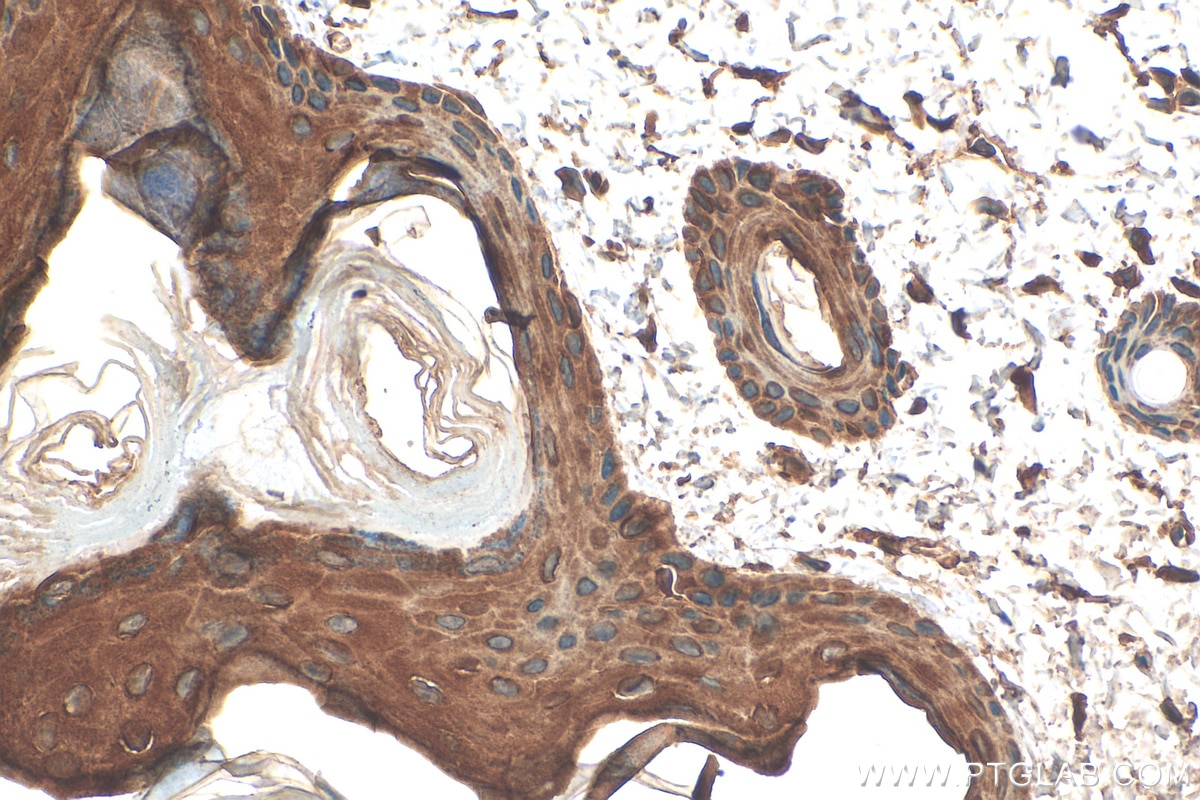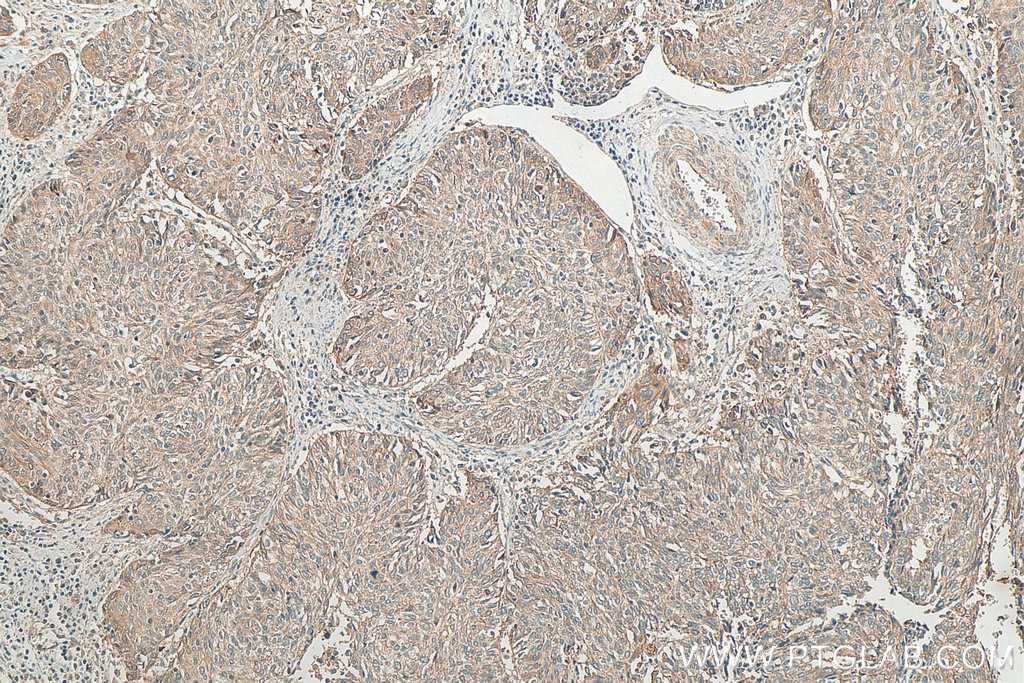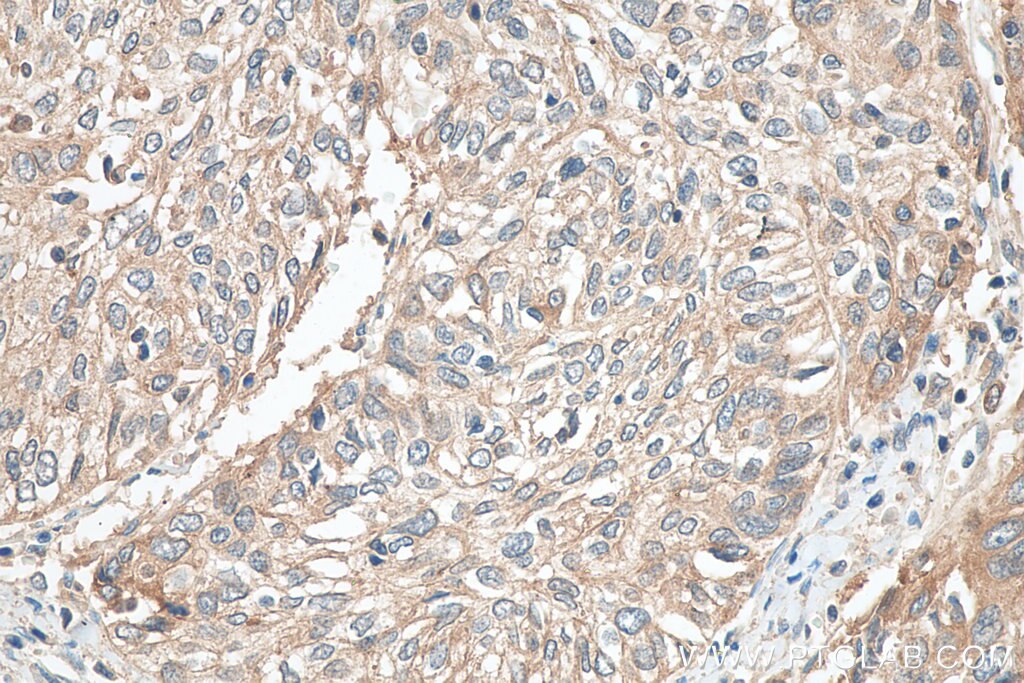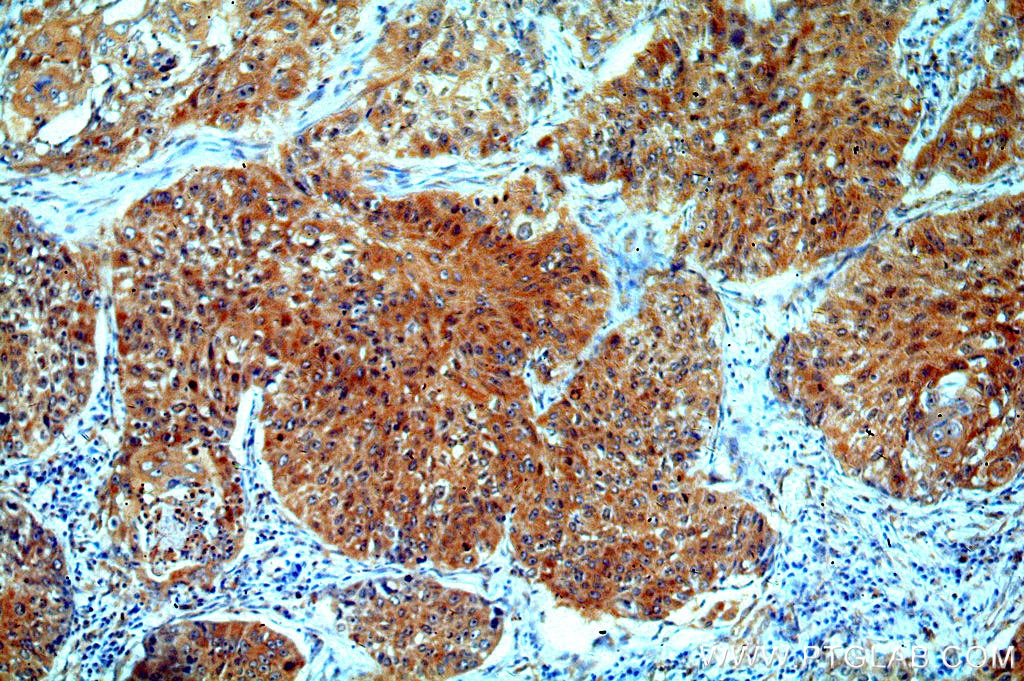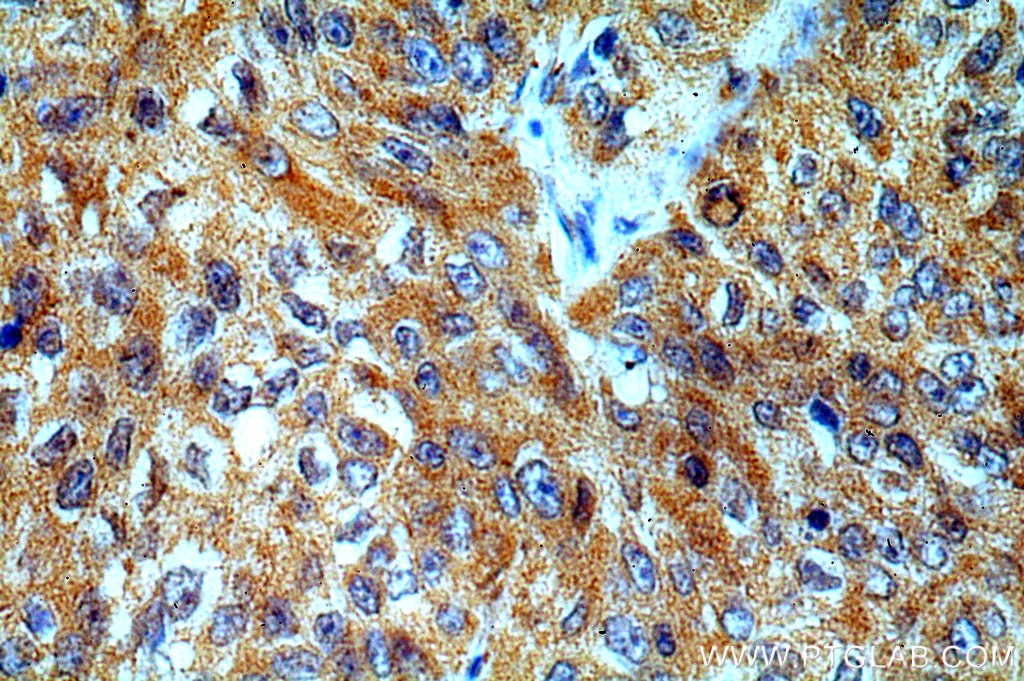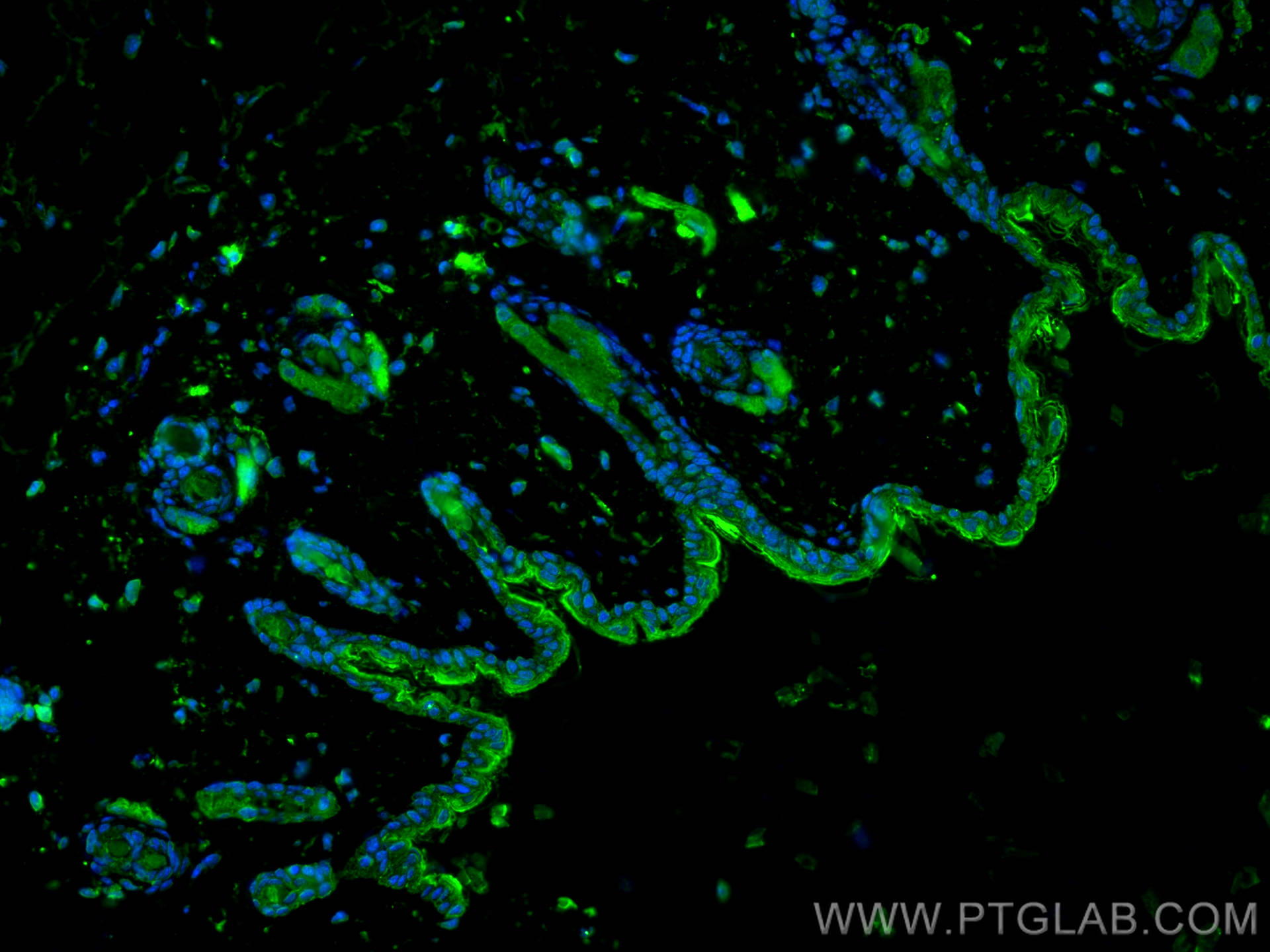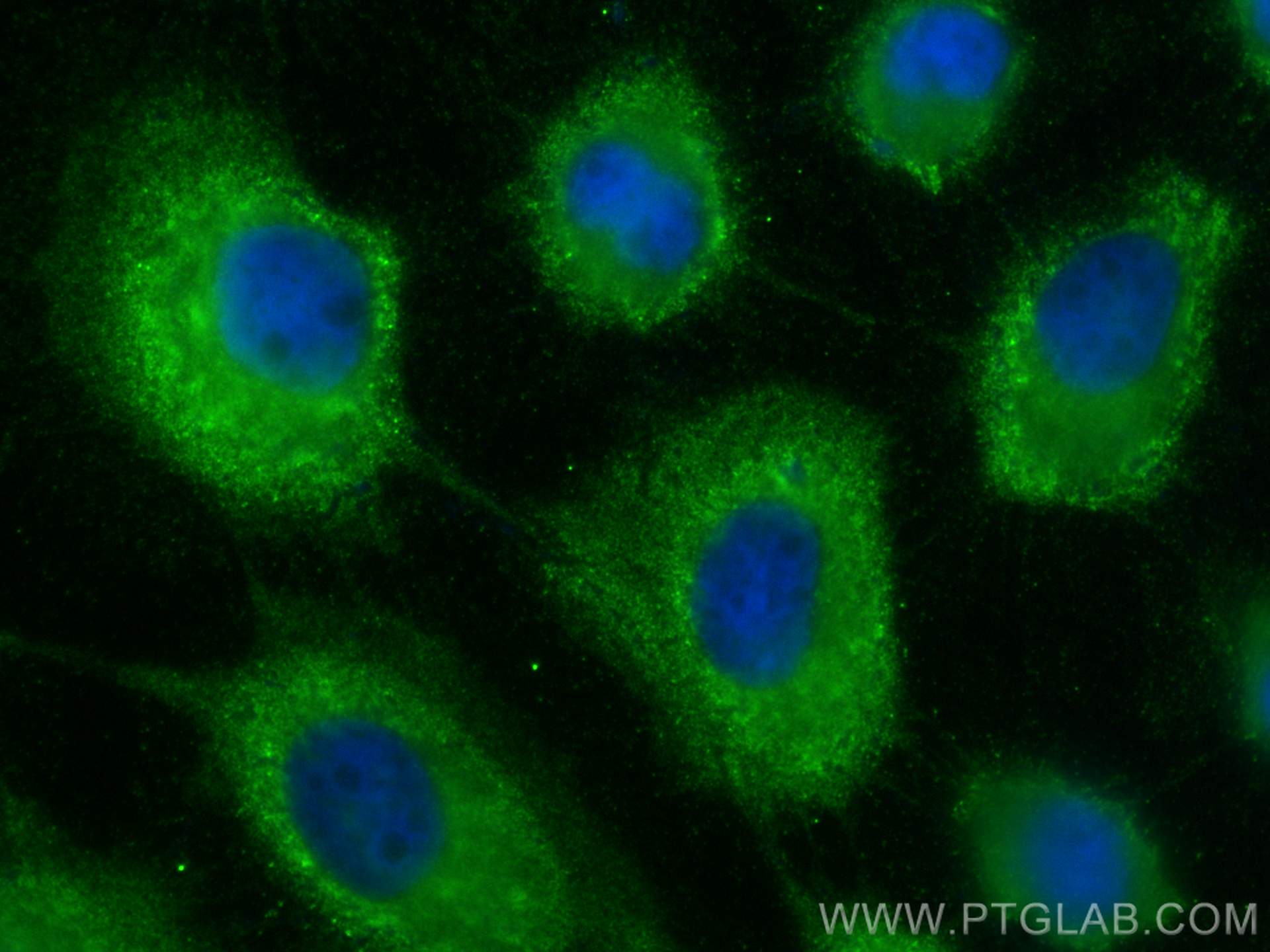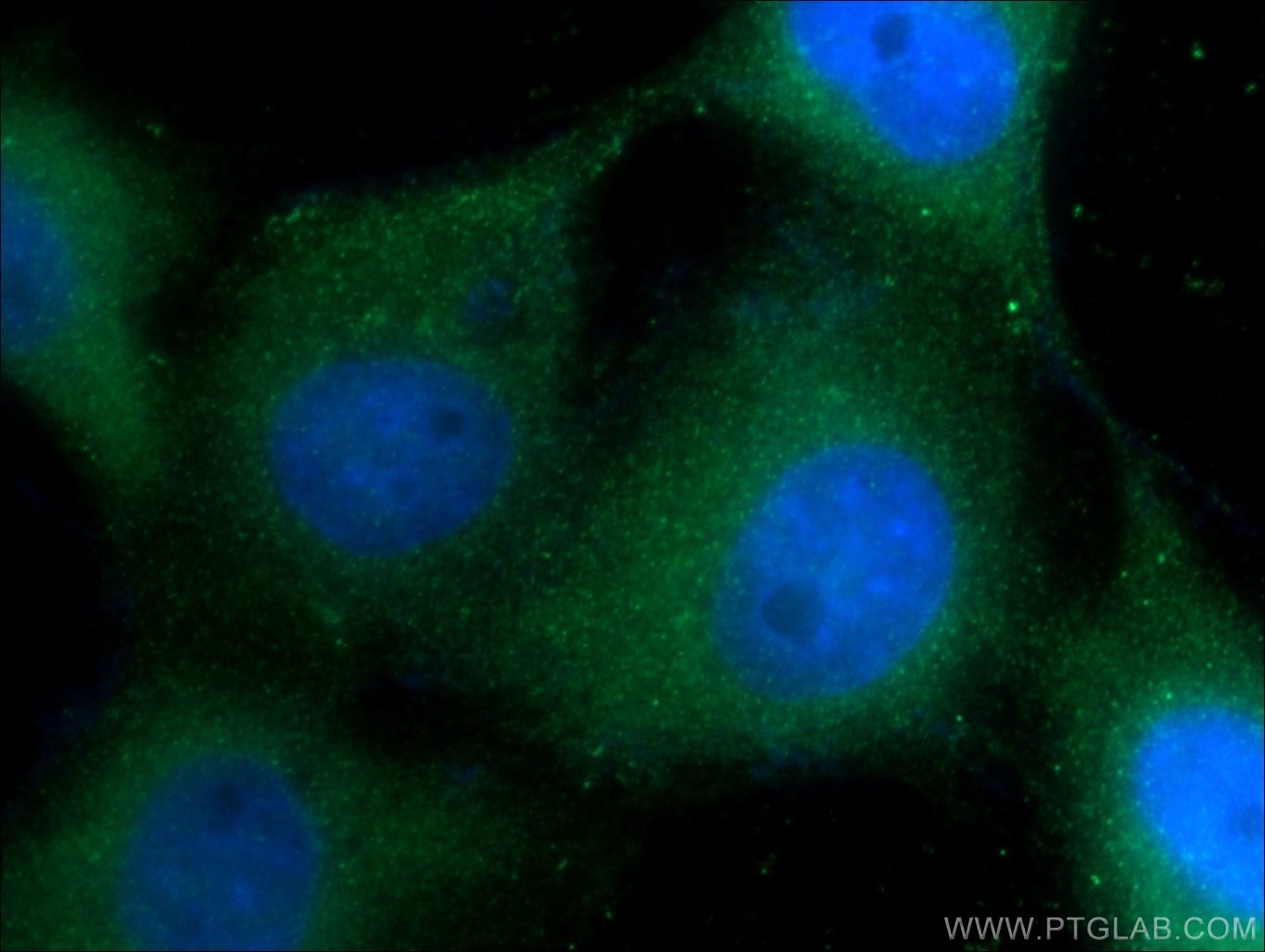Anticorps Polyclonal de lapin anti-Cytokeratin 1-specific
Cytokeratin 1-specific Polyclonal Antibody for WB, IHC, IF/ICC, IF-P, IP, ELISA
Hôte / Isotype
Lapin / IgG
Réactivité testée
Humain, rat, souris et plus (1)
Applications
WB, IHC, IF/ICC, IF-P, IP, ELISA
Conjugaison
Non conjugué
N° de cat : 16848-1-AP
Synonymes
Galerie de données de validation
Applications testées
| Résultats positifs en WB | tissu cutané de rat, tissu cutané de souris |
| Résultats positifs en IP | tissu cutané de souris, |
| Résultats positifs en IHC | tissu cutané de rat, tissu cutané humain, tissu de cancer du col de l'utérus humain, tissu de cancer du poumon humain il est suggéré de démasquer l'antigène avec un tampon de TE buffer pH 9.0; (*) À défaut, 'le démasquage de l'antigène peut être 'effectué avec un tampon citrate pH 6,0. |
| Résultats positifs en IF-P | tissu cutané de souris, |
| Résultats positifs en IF/ICC | cellules A431, |
Dilution recommandée
| Application | Dilution |
|---|---|
| Western Blot (WB) | WB : 1:500-1:2000 |
| Immunoprécipitation (IP) | IP : 0.5-4.0 ug for 1.0-3.0 mg of total protein lysate |
| Immunohistochimie (IHC) | IHC : 1:200-1:800 |
| Immunofluorescence (IF)-P | IF-P : 1:50-1:500 |
| Immunofluorescence (IF)/ICC | IF/ICC : 1:50-1:500 |
| It is recommended that this reagent should be titrated in each testing system to obtain optimal results. | |
| Sample-dependent, check data in validation data gallery | |
Applications publiées
| WB | See 11 publications below |
| IHC | See 4 publications below |
| IF | See 11 publications below |
Informations sur le produit
16848-1-AP cible Cytokeratin 1-specific dans les applications de WB, IHC, IF/ICC, IF-P, IP, ELISA et montre une réactivité avec des échantillons Humain, rat, souris
| Réactivité | Humain, rat, souris |
| Réactivité citée | rat, Chèvre, Humain, souris |
| Hôte / Isotype | Lapin / IgG |
| Clonalité | Polyclonal |
| Type | Anticorps |
| Immunogène | Peptide |
| Nom complet | keratin 1 |
| Masse moléculaire calculée | 66 kDa |
| Poids moléculaire observé | 67 kDa |
| Numéro d’acquisition GenBank | NM_006121 |
| Symbole du gène | KRT1 |
| Identification du gène (NCBI) | 3848 |
| Conjugaison | Non conjugué |
| Forme | Liquide |
| Méthode de purification | Purification par affinité contre l'antigène |
| Tampon de stockage | PBS with 0.02% sodium azide and 50% glycerol |
| Conditions de stockage | Stocker à -20°C. Stable pendant un an après l'expédition. L'aliquotage n'est pas nécessaire pour le stockage à -20oC Les 20ul contiennent 0,1% de BSA. |
Informations générales
Keratins are a large family of proteins that form the intermediate filament cytoskeleton of epithelial cells, which are classified into two major sequence types. Type I keratins are a group of acidic intermediate filament proteins, including K9-K23, and the hair keratins Ha1-Ha8. Type II keratins are the basic or neutral courterparts to the acidic type I keratins, including K1-K8, and the hair keratins, Hb1-Hb6. Keratin-1 is type II keratin. It is a specific marker for terminal differentiation in mammalian epidermis. It is specifically expressed in the spinous and granular layers of the epidermis with family member KRT10 and mutations in these genes have been associated with bullous congenital ichthyosiform erythroderma. This antibody is specifically against ketatin I.
Protocole
| Product Specific Protocols | |
|---|---|
| WB protocol for Cytokeratin 1-specific antibody 16848-1-AP | Download protocol |
| IHC protocol for Cytokeratin 1-specific antibody 16848-1-AP | Download protocol |
| IF protocol for Cytokeratin 1-specific antibody 16848-1-AP | Download protocol |
| IP protocol for Cytokeratin 1-specific antibody 16848-1-AP | Download protocol |
| Standard Protocols | |
|---|---|
| Click here to view our Standard Protocols |
Publications
| Species | Application | Title |
|---|---|---|
Nat Commun Macrophage lineage cells-derived migrasomes activate complement-dependent blood-brain barrier damage in cerebral amyloid angiopathy mouse model | ||
J Invest Dermatol Nuclear IL-33 plays an important role in the suppression of filaggrin, loricrin, keratin 1, and keratin 10 by IL-4 and IL-13 in human keratinocytes. | ||
J Invest Dermatol IL-22 downregulates peptidylarginine deiminase-1 in human keratinocytes: adding another piece to the IL-22 puzzle in epidermal barrier formation. | ||
Int J Mol Sci Cabs1 Maintains Structural Integrity of Mouse Sperm Flagella during Epididymal Transit of Sperm. | ||
Sci Rep Loss-of-function Mutation in PMVK Causes Autosomal Dominant Disseminated Superficial Porokeratosis. | ||
Front Endocrinol (Lausanne) c-Myc Upregulated by High Glucose Inhibits HaCaT Differentiation by S100A6 Transcriptional Activation. |
